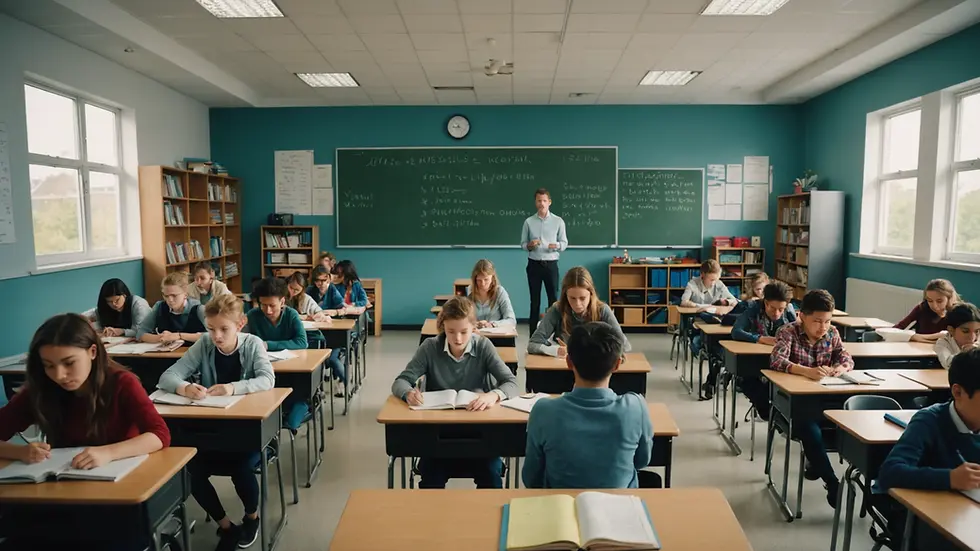Age-related problems can be exciting challenges! They not only test our reasoning skills but also help us grasp relationships and variables in math. This guide will teach 5th-grade students how to tackle age-related questions involving two or more people. By following this step-by-step approach, kids will learn to find unknown ages, making math a fun experience.
Understanding Age Problems
Before we get into problem-solving, let's cover some basics. Age-related problems typically involve at least two people, where each person’s age is described in relation to another.
For example, consider the question: "If Alice is twice as old as Bob, how old is Bob?" Through this type of problem, we learn to use variables like “x” or “y” to represent unknown ages.
Using this method not only prepares students for algebra but also makes math more approachable.

Structuring the Problems
To solve these problems systematically, follow this simple framework:
Read the question multiple times: Understanding the question thoroughly before attempting to solve it is important
Identify the Individuals: Start by recognizing the people involved in the problem.
Determine Relationships: Note how their ages are interrelated. For instance, one person might be younger or older than another, or their ages could be expressed as multiples.
Set Up Equations: Use variables to express unknown ages based on these relationships - this part you can do as you get experience with the questions. Try to solve multiple questions with the help of elders and then try to define fitting equations. This way you will learn how to set up equations. We will learn this separately later.
Solve the Equations: Finally, calculate the unknown variable to find each individual’s age.
Let's work through some examples to see this structure in action!
Example Problem 1: Classic Sibling Age Problem
Imagine Alice and Bob, two siblings. We know that Alice is three years older than Bob. If we let Bob's age be represented by “x”, we can express Alice's age as “x + 3”.
Step 1: Define the Variable
Bob's age = x
Alice's age = x + 3
Step 2: Formulate the Question
If we want to know how old Bob will be in five years, we can express this as:
Age of Bob in 5 years = x + 5
This allows students to easily figure out Bob’s future age by using the variable ‘x’.
Example Problem 2: Family Relations
Next, let's look at a different scenario:
Jessica is four times as old as her younger brother, Ethan. If we let Ethan's age be y, we can express Jessica’s age as 4y.
Step 1: Define the Variables
Ethan's age = y
Jessica's age = 4y
Step 2: Formulate the Question
Suppose we want to find out Jessica's age when Ethan is 10 years old. The equation needs to express their ages in relation to that target.
To figure out this relationship, we need to know what age Ethan has to be to maintain that ratio.

Example Problem 3: Creative Scenarios
Consider a situation where the teacher shares:
“The combined age of Miranda and her friend Oscar is 30 years, and Miranda is six years older than Oscar.”
Setting Oscar's age as a, we can express Miranda's age as a + 6.
Step 1: Create the Equation
The combined age = 30.
Thus, a + (a + 6) = 30.
Step 2: Solve for ‘a’
This simplifies to:
2a + 6 = 30.
Solving this equation allows students to find both Oscar and Miranda’s ages.
Solving Strategies: A Step-by-Step Approach
These age-related problems may seem tricky at first! However, here’s how to make them easier:
Write Down What You Know: Begin by jotting down all the details provided in the problem.
Set Up Your Equations: Use clear variables for unknown ages, and express known relationships mathematically.
Solve Carefully: Take your time when solving equations. Always double-check your work before finalizing your answers.
Validate Your Answers: Once possible ages are found, plug them back into the relationships to make sure they fit.
Using these strategies will help students solve age-related math problems efficiently and enjoyably.

Mastering Age Problems
Learning to solve age problems is not just about crunching numbers; it encourages critical thinking and logical reasoning. By using engaging examples and a structured approach, students can discover the joy of solving these age puzzles.
As kids work step by step through age relationships, they lay the groundwork for tackling more complicated equations in the future. Remember, math is an ongoing adventure, and age-related problems are a fun part of that journey!
Encourage young learners to practice these types of problems regularly! The more they engage with age problems, the more skilled they will become. Happy solving!
Level 1 Age Related Problems with Solutions
Comments